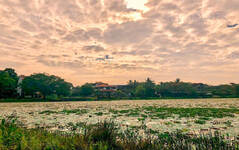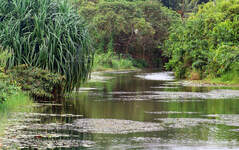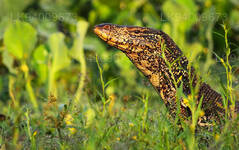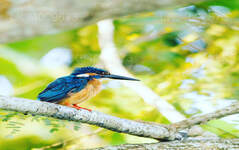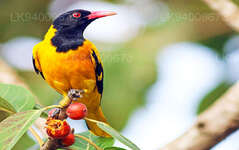
콜롬보 시
스리랑카의 수도 콜롬보는 전통과 현대가 조화를 이루는 역동적인 도시입니다. 식민지 시대 건축물, 활기 넘치는 시장, 그리고 고요한 불교 사원을 만나볼 수 있습니다. 다채로운 요리, 성장하는 스카이라인, 그리고 아름다운 해변을 자랑하는 콜롬보는 비즈니스, 문화, 관광의 중심지로서 스리랑카의 경이로움을 탐험할 수 있는 관문 역할을 합니다.
Talangama Wetland
The Thalangama Wetlands are the swamps surrounding the lake, which is located in the Thalangama area of Battaramulla. It’s quite shocking to realize that this haven of nature lies less than an hour outside the busy commercial center of Colombo.
What is a Wetland?
The Ramsar Convention (an international treaty for the conservation and suitable utilization of wetlands) defines the word wetland as ‘areas of marsh, fen, peatland or water, whether natural or artificial, permanent or temporary, with water that is static or flowing, fresh, brackish or salt, including areas of marine water the depth of which at low tide does not exceed six meters’. Wetlands can help in the mitigation of floods, offer protection from storms, help in the retention of sediment, act as a carbon sink, and be an excellent purifier of water.
About the Thalangama Wetlands
The Thalangama lake itself was manmade several centuries ago for irrigation purposes, and is surrounded by numerous paddy fields, canal, ponds and marshes. It supports a rich ecosystem that hosts thousands of species of exotic flora, over a hundred different species of birds, several species of butterflies and dragonflies, a few species of damselflies, reptiles and amphibians, and some small mammals. Given below is a list of confirmed sightings in some of the categories.
Birds
- Purple Swamphen
- White-breasted Waterhen
- Common Moorhen
- Pheasant-tailed Jacana
- Little Grebe
- Little Cormorant
- Cattle Egret
- Little Egret
- Intermediate Egret
- Oriental Darter
- Purple Heron
- Grey Heron
- Little Green Heron (Striated Heron)
- Indian Pond Heron
- Black-crowned Night- Heron
- Little Heron
- Oriental Honey-buzzard
- Red-wattled Lapwing
- Black Bittern
- Yellow Bittern
- Asian Open-bill
- Painted Stork
- Black-headed Ibis
- Glossy Ibis
- Lesser Whistling Teal
- Cotton Pigmy Goose
- Pied Kingfisher
- Common Kingfisher
- White-Throated Kingfisher
- Stork-billed Kingfisher
- Common Sandpiper
- Kentish Plover
- Lesser Sand Plover
- Golden Plover
- Marsh Sandpiper
- Common Redshank
- Common Greenshank
- Wood Sandpiper
- Curlew Sandpiper
- Black-winged Stilt
- Little Stint
- Imperial Green Pigeon
- Emerald Dove
- Spotted Dove
- Greater Coucal
- Rose-ringed Parakeet
- Asian Koel
- Indian Scops-owl
- Collared Scops-owl
- Brown Hawk-owl
- Little Green Bee-eater
- Ceylon Small Barbet
- Indian Pigmy Woodpecker
- Lesser Yellownape
- Black-rumped Flameback
- White-browed Bulbul
- Indian Pitta
- Barn Swallow
- Forest Wagtails
- Yellow Wagtails.
- Pintailed Snipe
- Kora (Watercock)
- Blue-tailed Bee-eaters
- White-backed Munia
- Dark-fronted Babblers
- Black-headed Munia
- Asian Paradise-Flycatcher
- Indian Swiftlets
- Little Swift
- Shikra
- Serpent Eagle
- Honey-buzzard
- Brown Shrike
- Black-headed Cuckooshrike
- Ceylon Green-Pigeon
- Petrel
- Pelican
- Black-hooded Oriole
- Yellow-billed Babbler
Dragonflies
- Blue-eyed Pondcruiser (Epophthalmia vittata)
- Rapacious Flangetails (Ictinogomphus rapax)
- Sombre Lieutenants (Brachydiplax sobrina)
- Spine-legged Redbolts (Rhodothemis rufa)
- Scarlet Baskers (Urothemis signata)
- Green Skimmer (Orthetrum sabina)
- Blue Pursuer (Potamarcha cogener)
- Elusive Adjutant (Aethrimanta brevipennis)
- Yellow Waxtail (Ceriagrion coromandelianum)
- Painted Waxtail (Ceriagrion cerinorubellum)
- Sapphire Flutterer (Rhyothemis triangularis)
Reptiles, Amphibians and Mammals
- Water Monitor
- Purple-faced Leaf Monkey
- Indian Porcupine
- Brown Mongoose,
- Palm Civet Cat
- Fishing Cat
- Otter
- Moose Deer
Things to do at the Thalangama Wetlands:
- Birdwatching ( Start early in the day. Bring your binoculars and cameras. Average sightings for a Half-Day Birdwatching Tour – 60 to 70 species )
- Butterfly/Dragon Fly Watching
- Nature Tour
- Jogging
- Cycling
While enjoying the nature make sure that you take only photos and memories, and leave only your footsteps. Protect the ecology for the future.
콜롬보 지구 소개
콜롬보는 스리랑카에서 가장 큰 도시이자 상업 중심지입니다. 섬의 서쪽 해안에 위치하며 수도인 스리자야와르데네푸라코테와 인접해 있습니다. 콜롬보는 현대적인 삶과 식민지 시대 건물 및 유적이 조화를 이루는 활기 넘치는 도시로, 인구는 647,100명입니다. 콜롬보, 감파하, 칼루타라 지구로 구분되는 콜롬보 수도권은 약 5,648,000명의 인구를 보유하고 있으며, 면적은 3,694.20km²입니다. 콜롬보는 다민족, 다문화 도시입니다. 스리랑카에서 인구가 가장 많은 도시로, 시 경계 내에 642,163명이 거주합니다. 콜롬보의 인구는 주로 싱할라족, 무어족, 타밀족 등 다양한 민족이 혼합되어 있습니다. 이 도시에는 중국, 포르투갈, 네덜란드, 말레이, 인도계 주민들로 구성된 소규모 공동체와 수많은 유럽계 외국인들이 거주하고 있습니다. 스리랑카 기업의 대다수는 콜롬보에 본사를 두고 있습니다. 화학, 섬유, 유리, 시멘트, 가죽 제품, 가구, 보석류 등의 산업이 이곳에 있습니다. 시내 중심부에는 남아시아에서 두 번째로 높은 건물인 세계 무역 센터가 있습니다.
서부 지방에 대하여
서부 주는 스리랑카에서 인구 밀도가 가장 높은 주입니다. 입법 수도인 스리자야와르데네푸라코테와 국가의 행정 및 비즈니스 중심지인 콜롬보가 있습니다. 서부 주는 콜롬보(642km²), 감파하(1,386.6km²), 칼루타라(1,606km²)의 세 개의 주요 지구로 나뉩니다. 스리랑카의 경제 중심지인 서부 주에는 모든 주요 국내 및 국제 기업과 유명 디자이너 및 대형 유통업체가 자리 잡고 있습니다. 따라서 서부 주에서 쇼핑을 즐길 준비를 하세요. 모든 주에서 인구가 가장 많은 서부 주에는 섬의 거의 모든 주요 교육 기관이 위치해 있습니다. 이 지방의 대학으로는 콜롬보 대학, 스리자야와르데네푸라 대학, 켈라니야 대학, 스리랑카 오픈 대학, 스리랑카 불교 및 팔리어 대학, 존 코텔라왈라 국방 대학, 모라투와 대학이 있습니다. 서부 지방에는 국립, 지방, 사립 및 국제 학교를 포함하여 전국에서 가장 많은 학교가 있습니다.

